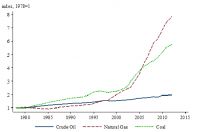
Technology and the future of Bangladesh’s apparel industry
Bangladesh has drawn global attention as a “development surprise,” thanks to our impressive economic performance – with an average GDP growth of over 7% for the last two years — and improvements in other socio-economic parameters.
It has already attainted the status of lower middle-income country and made tangible progress in the areas of industrialization, education, health, trade, infrastructure, energy and power, ICT and other service sectors.
According to PWC’s predictions, Bangladesh will be the 28th largest economy by 2030.
Industrial development has a major role to play in realizing this potential as it will be a key driver of our economic growth. The ready-made garments (RMG) industry of Bangladesh has considerable strengths and immense potentials to complement this growth.
The RMG industry has been the flagship of our manufacturing sector, accounting for more than 81% of our total exports.
The industry has made significant contributions to our nation’s socio-economic development in terms of employment generation, poverty alleviation, women empowerment, girls’ education, reducing child marriage rate and many more.
Growth in the global apparel market is expected to pick up again over the coming years after a period of decline in global apparel trade in recent years.
Apparel buyers are looking for alternative sources — faster, more sustainable and technologically compatible manufacturing sources.
The world is rapidly changing as it under goes the fourth industrial revolution where smart technologies will redefine economic activity and usher us into a new era.
Today technology does not mean only machines to improve productivity, energy and resource efficiency, but also in the area of managing supply chain, retailing online and smart clothing.
When we look at our industry on a perspective of global advancement, we find ourselves significantly lagging behind; although, quite encouragingly, our factories have started moving from semi-automatic to more automatic set-up.
Low liquor dyeing machine, ozone washing machines, SAP, ERP and such technologies are already becoming common.
Moreover our progress in eco-friendly industrialization has gained significant momentum in recent years. We have now 67 green factories certified by the United States Green Building Council, of which 13 are platinum.
Moreover, 280 more factories are in the pipeline for getting USGBC certification and many more are preparing for it.
Keeping up with tech
While it’s excellent that we are responding to environmental needs, we must also make use of new patterns and fourth generation technologies including the advanced applications of information technologies in our supply chain management, ie IOT (internet of things).
At the same time we have to enhance our productivity and efficiency, which requires technology upgrades and modernization of factories.
Speed and optimum use of resources will be the key to future business success and sustainability. Looking further forward, 3D printing technologies is anticipated to bring major disruption in fashion manufacturing and retailing.
It’s important not to get complacent about the fact that China is gradually shifting from basic to mid-range apparel because of growing production costs. While this may be an opportunity for us to grow our market share in basic apparel, it can also keep us trapped in the lower-end of the market, as China gets relatively richer by selling more expensive apparel.
We should, therefore, closely observe how China is re-structuring their industry through the use of new technology, automation, and advanced robotics to gain more competitive advantage and offer innovative products at lower prices.
Diversification of fashion items and innovation is a critical area for our long term growth sustainability. It’s a good sign that Bangladesh is gearing up to cater to the needs of high-end and branded fashion segments.
In recent years, our RMG exports have expanded to include items like suits and blazers, lingerie, active-wear and outerwear, and non-cotton items. We have to reduce our dependence on basic products and build our capacity ourselves to meet the demand of high-end and branded fashion segments in order to accelerate the industry’s growth.
Considering the importance of technological upgrades for the future success of apparel industries, our competing countries have introduced special policy support like the Technology Upgradation Fund Scheme (TUFS) for the garment and textile industry in India.
Bangladesh has made tremendous progress in digital transformation over the last decade under the government’s “Digital Bangladesh” initiative; we have to now reap the benefits of digitalization by embedding it in our industry for which we need policy support.
This will ultimately result in more export earnings for the country. Besides, our entrepreneurs need to be up-to-date about the latest technological advances in the industry and proactive in embracing them.
Improve skills
Bangladesh is now passing through a golden age in term of its population dividend. About 70% of our population is under 40.
While there is a concern about technologies killing jobs, we should rather be more concerned about why a significant part of our talented youths are unemployed whereas a good number of foreign experts are working in Bangladesh in highly-paid managerial positions.
The gap between our education system and industry needs to close. We need to identify the gap between demand and supply for skills, factoring in the changing needs of industry in the near-future.
We need a stronger collaboration between manufacturers, buyers and experts to identify present and future needs in terms of skills in the job market.
We need a harmonious balance of informed policy, appropriate institutional framework, and efficient allocation of resources to produce market-driven skills.
Needless to say that Bangladesh has successfully faced a number of challenges in its 35 years’ of experience in apparel manufacturing, including the elimination of child labour in 1994, and made progress in the areas of social compliance.
Currently we are working on workplace safety and environmental sustainability issues. We are working with the government, ILO, brands & retailers, donors, international agencies and foreign governments to ensure workplace safety factory by factory.
Today we are proud to say that Bangladesh is in a new era of industrialization having probably one of the safest apparel industries.
While we are taking all these positive steps and our factories are increasingly investing money in safety and sustainability, we are still living in the age of price cuts!
In a highly competitive free market economy, prices cannot be dictated by individual producers. But at the same time, the price must be high enough to ensure that workers are paid a fair, living-wage.
Since technological advancement would be a new horizon of opportunities for all the partners in the global fashion supply chain, there needs to be a collaborative approach between buyers and suppliers supported by the government and development partners so that it creates a win-win situation for all.
The opportunities in global sourcing can only be tapped into when there is collective and collaborative action by stakeholders across the global value chain.




